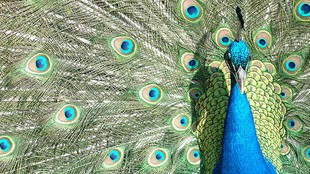 FLICKR CREATIVE COMMONS, PAUL FRIEL
FLICKR CREATIVE COMMONS, PAUL FRIEL
Darwin hypothesized that the only reason males of a species would have such impractical adornments as the peacock's unwieldy tail feathers is to attract females. Likewise, the stag's antlers fought for the attention of and access to potential mates. Both of these theories seemed to be powerfully vindicated by Angust Bateman's 1948 study with fruit flies, which cemented sexual selection as the foundation for mating research.
Now, researchers have replicated Bateman's experiments, which followed the surviving traits of fruit flies bred with specific characteristics such as tiny wings or shriveled heads, and found Bateman had overlooked some important issues, leading him to skew the results.
The new study, published last week (July 3) in Proceedings of the National Academy of Sciences, revealed that Bateman overestimated the number of adult flies that hadn't mated at all, underestimated the number that had mated multiple times, and under-counted...
However, more recent work, on both fruit flies and other species, has confirmed Bateman's underlying principles, and researchers have found evidence for sexual selection in action throughout the animal kingdom. But this new research strengthens emerging ideas that sexual selection is a more subtle dance than Darwin had assumed.



